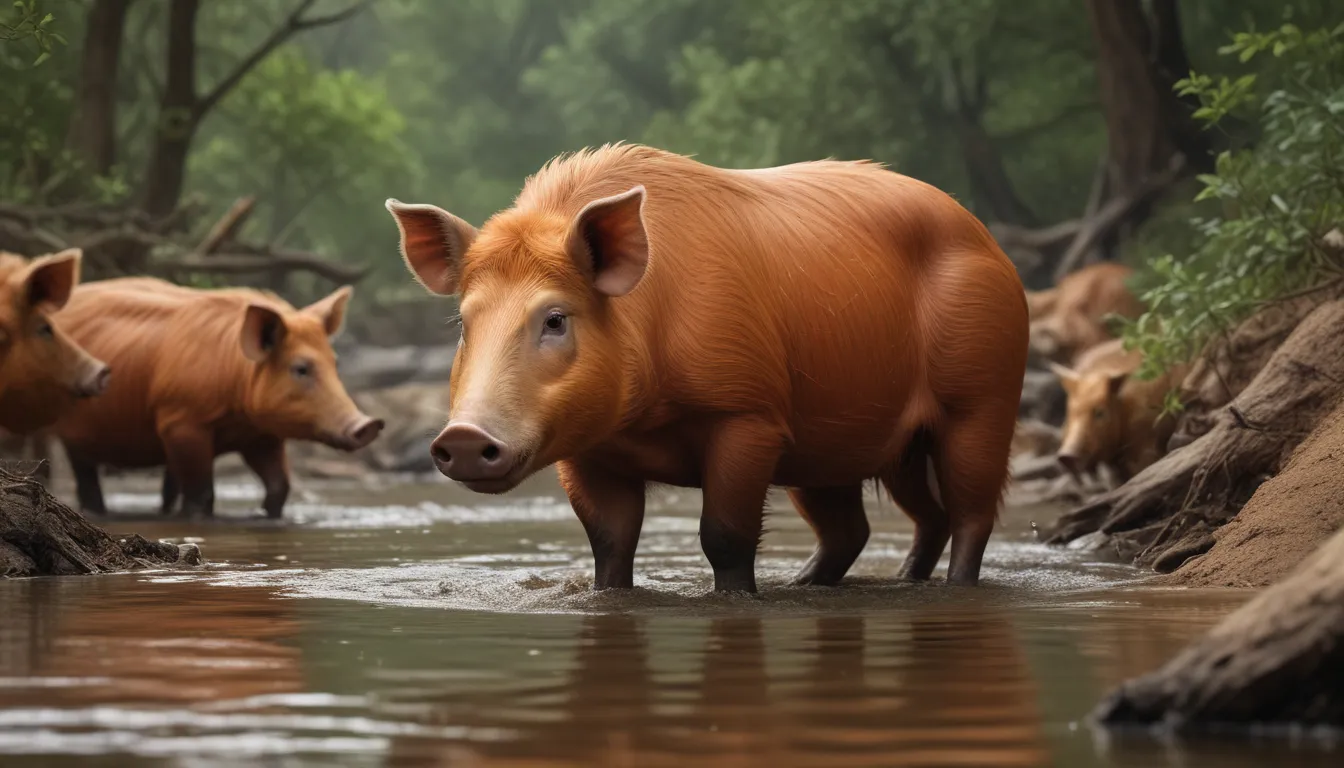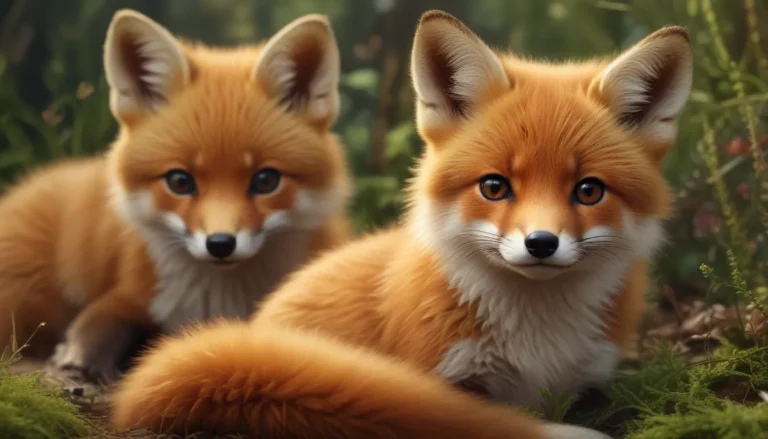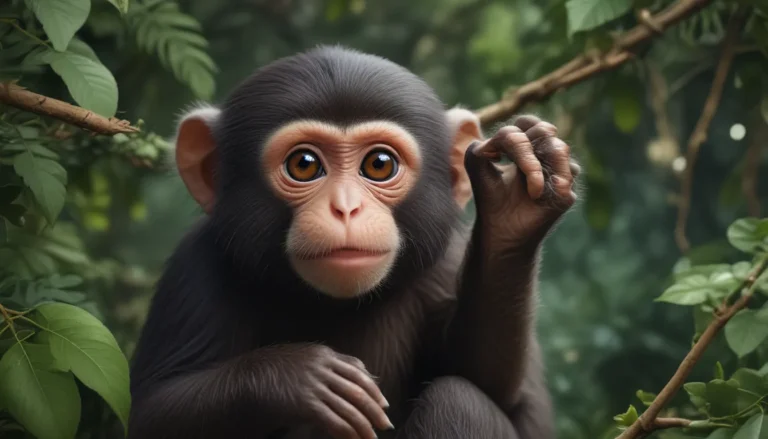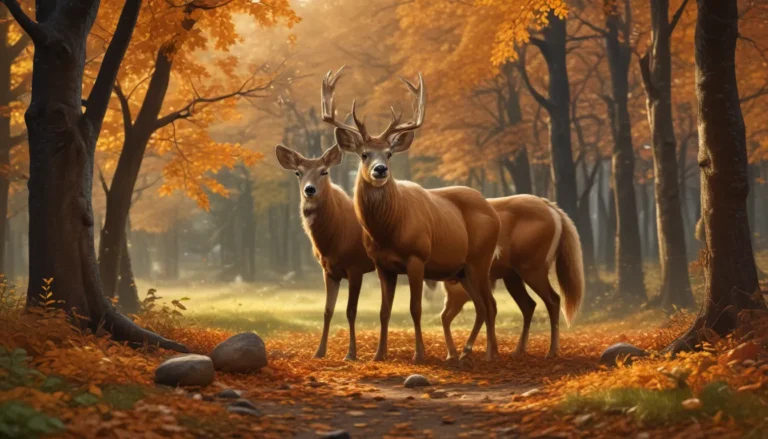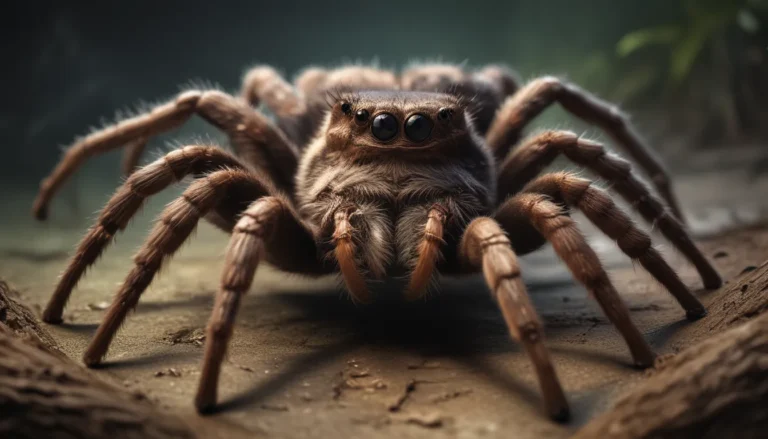The pictures we use in our articles might not show exactly what the words say. We choose these pictures to make you interested in reading more. The pictures work together with the words but don’t take their place. The words still tell you the important facts.
Are you intrigued by the unique and captivating Red River Hog? Originating from the forests and savannahs of Africa, these medium-sized pigs with their reddish-brown fur and impressive tusks are truly a sight to behold. But there is so much more to discover about these charismatic animals! Join us as we delve into 19 captivating facts about the Red River Hog, exploring their appearance, social behavior, habitat, diet, and much more.
Unveiling the Appearance of Red River Hogs
Red River Hogs are easily recognizable by their striking features, including their reddish-brown fur, white tufts on their ears, and a distinctive white stripe running down their spine. These medium-sized hogs can weigh up to 200 pounds and stand about 2 feet tall at the shoulder, making them a visually arresting presence in their environment.
Delving into Social Behavior
Red River Hogs are highly social animals that live in small groups known as sounders. These groups typically consist of a dominant male, several females, and their offspring. Communication within these sounders involves a variety of vocalizations and body movements, showcasing their complex and intriguing social dynamics.
Unpacking the Dietary Habits of Red River Hogs
As omnivores, Red River Hogs have a diverse diet that includes roots, tubers, fruits, leaves, and grass. They also supplement their diet with insects, small mammals, and even carrion, showcasing their adaptability and resourcefulness in finding food sources in their natural habitat.
Venturing into the Natural Habitat of Red River Hogs
Red River Hogs can be found in various habitats such as forests, woodlands, and savannahs. They prefer areas with dense vegetation and proximity to water sources, such as rivers and swamps, highlighting their affinity for specific environmental conditions that support their survival and thriving.
Embarking on the Reproduction Journey
Female Red River Hogs give birth to litters of around 2 to 6 piglets after a gestation period of approximately 120 to 127 days. These piglets are born with a camouflage coat to aid them in blending into their surroundings, showcasing the species' evolutionary adaptations for survival.
Unveiling Adaptations for Survival
Red River Hogs possess physical adaptations that aid in their survival in the wild. Their long, sharp tusks and impressive canines help them defend against predators, while their coloring provides camouflage on the forest floor, enhancing their ability to blend in with their environment and avoid detection.
Uncovering Threats to Red River Hogs
Red River Hogs face various threats in their natural habitat, including habitat loss due to deforestation, hunting for bushmeat, and competition with livestock for resources. Conservation efforts are vital to protect the declining population of these captivating animals and ensure their long-term survival.
Exploring the Matriarchal Society of Red River Hogs
Within a Red River Hog sounder, the dominant female, known as the matriarch, holds the highest rank. She plays a pivotal role in determining the group's activities, leading them to food sources and safe areas, showcasing the strong social hierarchy within these sounder groups.
Decoding the Language of Red River Hogs
Red River Hogs are vocal creatures that use a range of sounds to communicate with each other, including grunts, squeals, screams, and even roars when threatened. Their communication through vocalizations provides insight into their social interactions and behaviors within their groups.
Unraveling the Predators of Red River Hogs
In the wild, Red River Hogs have natural predators such as lions, leopards, hyenas, and crocodiles. Their agility and social structure play a crucial role in helping them evade predators and protect themselves from potential threats in their environment.
Exploring the Lifespan of Red River Hogs
In their natural habitat, Red River Hogs have an average lifespan of approximately 10 to 15 years. However, in captivity, they can live longer, with some individuals reaching up to 20 years of age, showcasing the impact of different environments on their longevity.
Understanding Communication through Scent
Red River Hogs possess scent glands on their faces, feet, and flanks, which they use to mark their territory and communicate with other hogs through scent signals. This form of communication plays a crucial role in establishing boundaries and conveying information within their social groups.
Diving into Swimming Abilities
Despite their stocky build, Red River Hogs are adept swimmers, able to cross rivers and swim short distances when necessary. Their swimming abilities showcase their adaptability and agility in navigating different terrains and environments.
Highlighting Ecological Importance
Red River Hogs play a crucial role in the ecosystem as seed dispersers. By consuming fruits and dispersing undigested seeds through their feces, they contribute to forest regeneration and biodiversity, highlighting their ecological significance in maintaining healthy ecosystems.
Advocating for Conservation Efforts
Given the declining population of Red River Hogs, conservation organizations and governments are working tirelessly to protect their natural habitats, enforce hunting regulations, and raise awareness about the importance of preserving these unique animals for future generations to appreciate and admire.
Celebrating Curiosity and Intelligence
Red River Hogs are renowned for their inquisitive and intelligent nature, with observations showing them utilizing tools such as sticks to probe the ground for hidden food. Their cognitive abilities and problem-solving skills underscore their adaptability and resilience in their environment.
Recognizing Cultural Significance
In certain African cultures, Red River Hogs hold cultural and symbolic importance, with their images frequently featured in artwork, masks, and ceremonies. They symbolize strength, fertility, and a spiritual connection with nature, showcasing the deep cultural resonance they hold in various societies.
Acknowledging Conservation Status
Red River Hogs are currently classified as "Least Concern" by the International Union for Conservation of Nature (IUCN). However, their population status varies across regions, emphasizing the need for ongoing monitoring and conservation efforts to ensure their long-term survival and well-being.
Embracing the Charm of Red River Hogs
The Red River Hog is undeniably one of the most captivating creatures in Africa, with its unique appearance, social behavior, and intriguing adaptations captivating the hearts of animal enthusiasts worldwide. Their resilience and adaptability in the face of environmental challenges make them a truly remarkable species worth learning about and protecting.
Conclusion: Appreciating the Red River Hog
In conclusion, the Red River Hog stands out as a fascinating and distinctive animal with a myriad of captivating characteristics. From their appearance to their behaviors and ecological significance, these animals continue to impress and inspire curiosity among those who encounter them. By learning more about the Red River Hog, we gain a deeper appreciation for the beauty and diversity of the animal kingdom, underscoring the importance of conservation efforts to safeguard their future.
FAQs: Answering Your Questions About Red River Hogs
As you explore the world of Red River Hogs, you may have some burning questions about these captivating creatures. Here are some frequently asked questions to help you deepen your understanding of these fascinating animals:
- Q: What is the habitat of Red River Hogs?
-
A: Red River Hogs primarily inhabit rainforests and woodland savannas in West and Central Africa.
-
Q: What do Red River Hogs eat?
-
A: Red River Hogs have an omnivorous diet, consuming roots, bulbs, fruits, leaves, mushrooms, insects, and small vertebrates.
-
Q: How big do Red River Hogs get?
-
A: Adult Red River Hogs typically weigh between 100 to 250 pounds and can reach lengths of 3.3 to 4.3 feet, with males being slightly larger than females.
-
Q: Are Red River Hogs endangered?
-
A: Red River Hogs are currently classified as a species of least concern on the IUCN Red List, though they face threats in certain regions due to habitat loss and hunting.
-
Q: How long do Red River Hogs live?
-
A: In the wild, Red River Hogs have an average lifespan of about 10 to 15 years, but they can live longer in captivity, with some reaching up to 20 years.
-
Q: Are Red River Hogs aggressive?
-
A: Red River Hogs are generally shy and non-aggressive, but may exhibit defensive behaviors when threatened or protecting their young.
-
Q: Do Red River Hogs have predators?
-
A: Yes, Red River Hogs face predators such as carnivores, including leopards, lions, hyenas, and crocodiles, as well as large birds of prey.
-
Q: How do Red River Hogs communicate?
-
A: Red River Hogs communicate through a diverse range of vocalizations, including grunts, squeals, screams, and body language such as raising and shaking their manes.
-
Q: Can Red River Hogs swim?
-
A: Yes, Red River Hogs are proficient swimmers, utilizing their swimming abilities to navigate water sources and cool off in hot weather.
-
Q: Are Red River Hogs kept in zoos?
- A: Yes, Red River Hogs are commonly found in zoos worldwide, where they play a vital role in conservation efforts and educating the public about this unique species.
Embracing the World of Red River Hogs
As you immerse yourself in the world of Red River Hogs, each fact reveals a new layer of intrigue and fascination about these captivating creatures. Their unique appearance, social dynamics, and ecological importance paint a picture of resilience and adaptability in the face of environmental challenges. By learning about and appreciating the Red River Hog, we gain a deeper understanding of the diverse and extraordinary wildlife that shares our planet, highlighting the need for conservation efforts to preserve these remarkable animals for future generations to admire and cherish.
